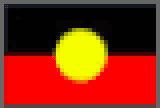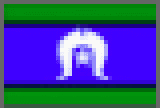Beck Depression Inventory BDI
Beck Depression Inventory BDI overview
Creator and Context
The Beck Depression Inventory (BDI) is a highly regarded self-report inventory designed to assess the presence and severity of depressive symptoms. Developed in several versions, including BDI, BDI-1A, and the more recent BDI-II, it consists of 21 questions, each with multiple-choice answers. The BDI is celebrated for its simplicity and efficiency in clinical settings.
Created by psychiatrist Aaron T. Beck, the BDI was initially published in 1961, with subsequent revisions in 1971 (BDI-1A) and 1996 (BDI-II). Beck's development of the inventory was part of a larger shift in psychiatry towards cognitive theory, focusing on how a person's thoughts and beliefs influence their mood and behavior.
Presenting Conditions
The BDI is specifically designed to measure the intensity, severity, and depth of depression in individuals, assessing symptoms such as mood, pessimism, sense of failure, self-dissatisfaction, guilt, punishment feelings, suicidal ideas, crying, irritability, social withdrawal, body image change, work difficulties, insomnia, fatigability, appetite, weight loss, and somatic preoccupation.
Administration
The BDI can be self-administered or administered in an interview format by a clinician. It typically takes 5-10 minutes to complete. Clear instructions are provided, and respondents are asked to answer each question based on how they have been feeling during the past two weeks, including the day of assessment.
Desired Audience
This inventory is suitable for adolescents and adults, aged 13 and above. It is used across various settings, including clinical psychology, psychiatry, primary care, and research.
Clinicians should use the BDI as part of a comprehensive assessment, considering the individual's history, clinical status, and other diagnostic tools. It is not a diagnostic tool in itself but can aid in monitoring symptom severity and treatment progress.
Considerations
Care should be taken in interpreting results, as some physical symptoms listed might be due to medical conditions rather than depression. Cultural and social factors should also be considered, as they can influence responses.
How to score the Beck Depression Inventory BDI
Conducting the assessment
Respondents select the statement in each group that best describes the way they have been feeling for the past two weeks, including today.
Interpretation
Each of the 21 items is scored on a scale from 0 to 3, with the total score ranging from 0 to 63. Higher total scores indicate more severe depressive symptoms. The BDI-II has different cutoff scores:
0-13: Minimal depression
14-19: Mild depression
20-28: Moderate depression
29-63: Severe depression
Scores should be interpreted in the context of the individual's overall clinical picture.
Clinical Considerations
The BDI should not be used as the sole basis for diagnosis of depression. It is a tool for assessing the severity of symptoms and should complement other diagnostic approaches.
Beck Depression Inventory BDI use cases
The BDI is helpful in:
Assessing severity of depression before and after treatment
Identifying individuals at risk for depression in non-clinical settings
Researching the epidemiology and phenotypes of depression
Category
Depression
Research Summary
Beck, A.T., Steer, R.A., & Brown, G. (1996). Manual for the Beck Depression Inventory-II. San Antonio, TX: Psychological Corporation.
Beck, A.T., Ward, C.H., Mendelson, M., Mock, J., & Erbaugh, J. (1961). An inventory for measuring depression. Archives of General Psychiatry, 4, 561-571.
Other Assessment Guides
Edinburgh Postnatal Depression Scale EPDS
Explore the Edinburgh Postnatal Depression Scale (EPDS), a vital tool for identifying postpartum depression. Our guide details its application, scoring, and interpretation, crucial for healthcare professionals in obstetrics, primary care, and mental health.
Patient Health Questionnaire PHQ-9
Uncover the essentials of the Patient Health Questionnaire (PHQ-9), a prominent tool for depression screening and severity assessment. Our comprehensive guide details its administration, scoring, and clinical application, ideal for healthcare practitioners and mental health researchers.










